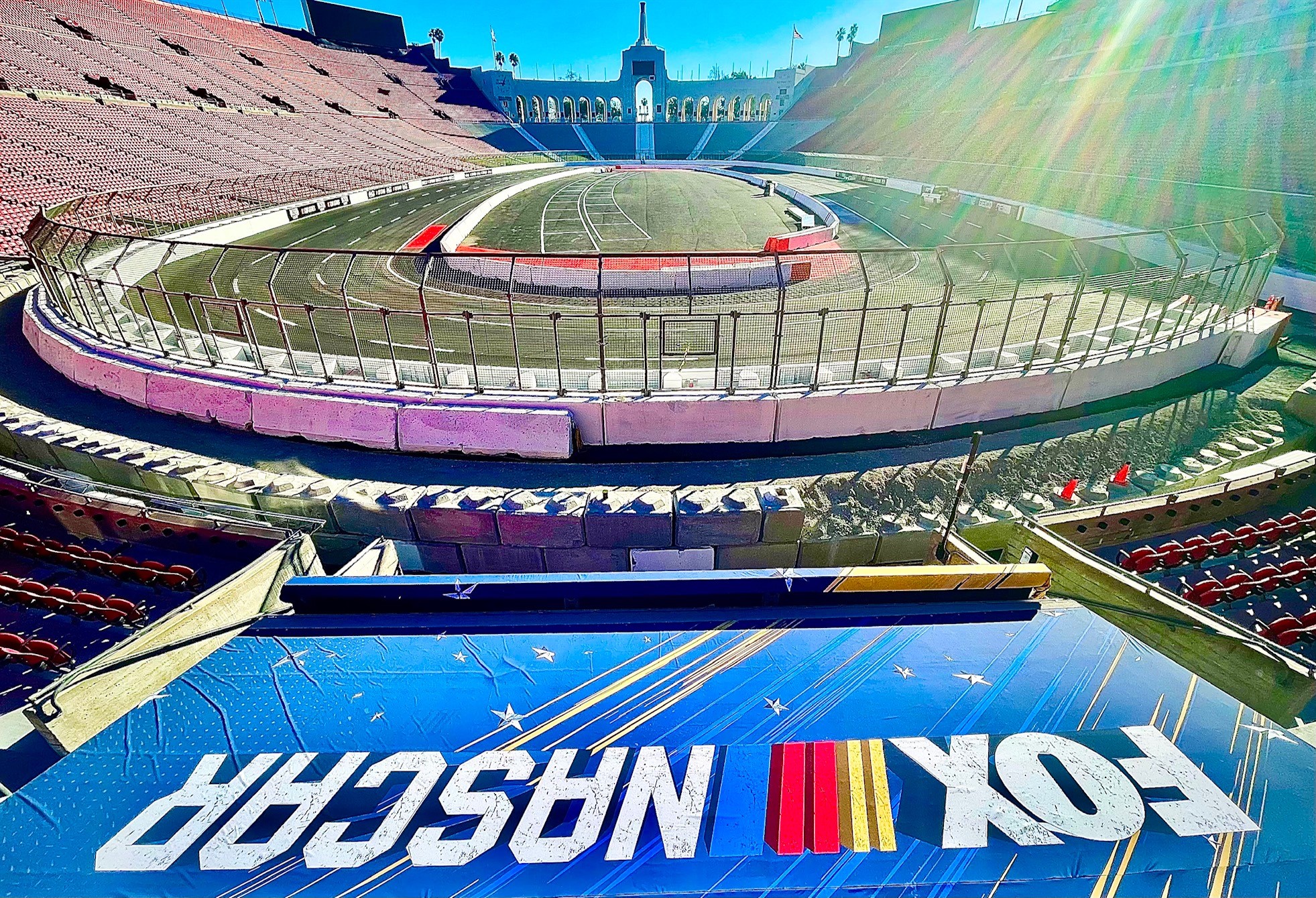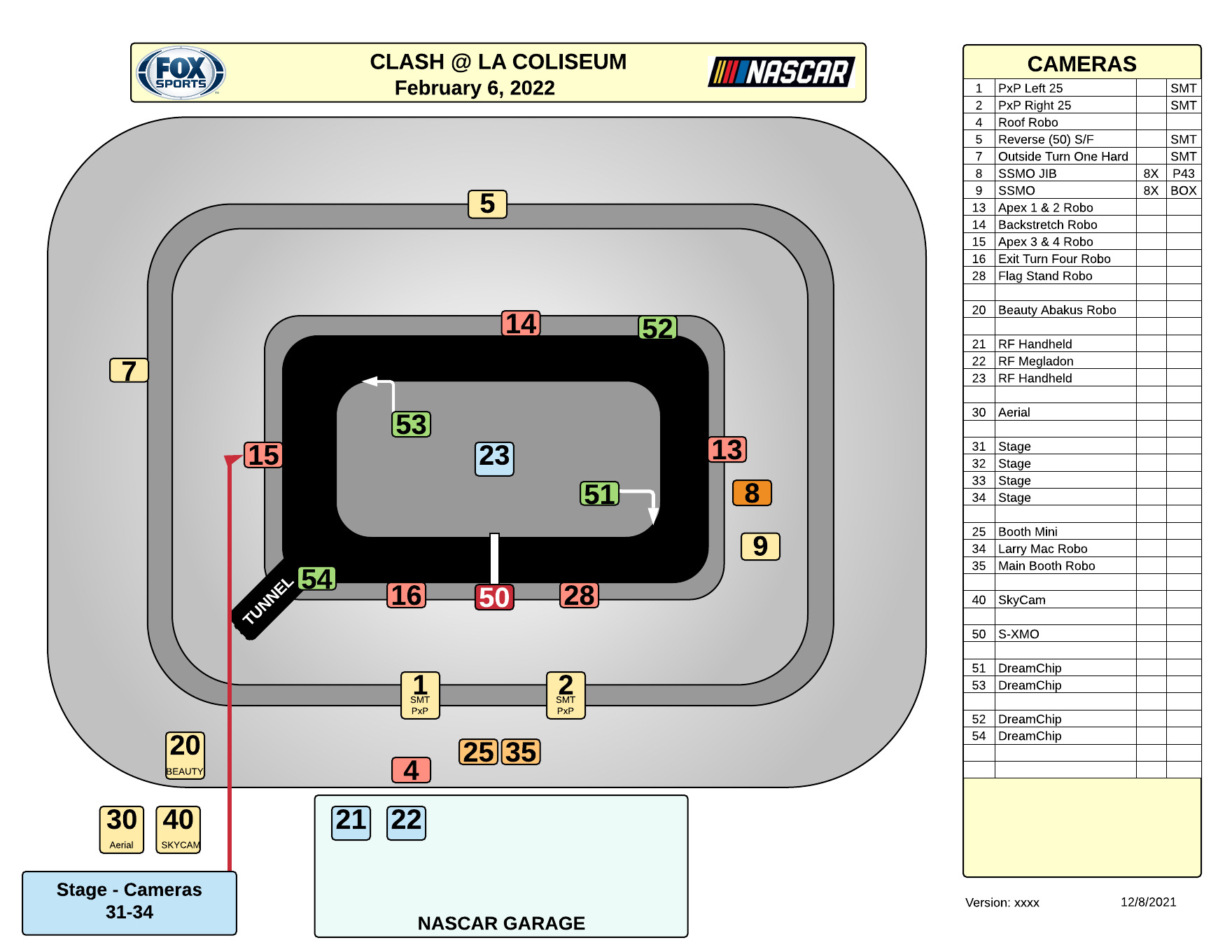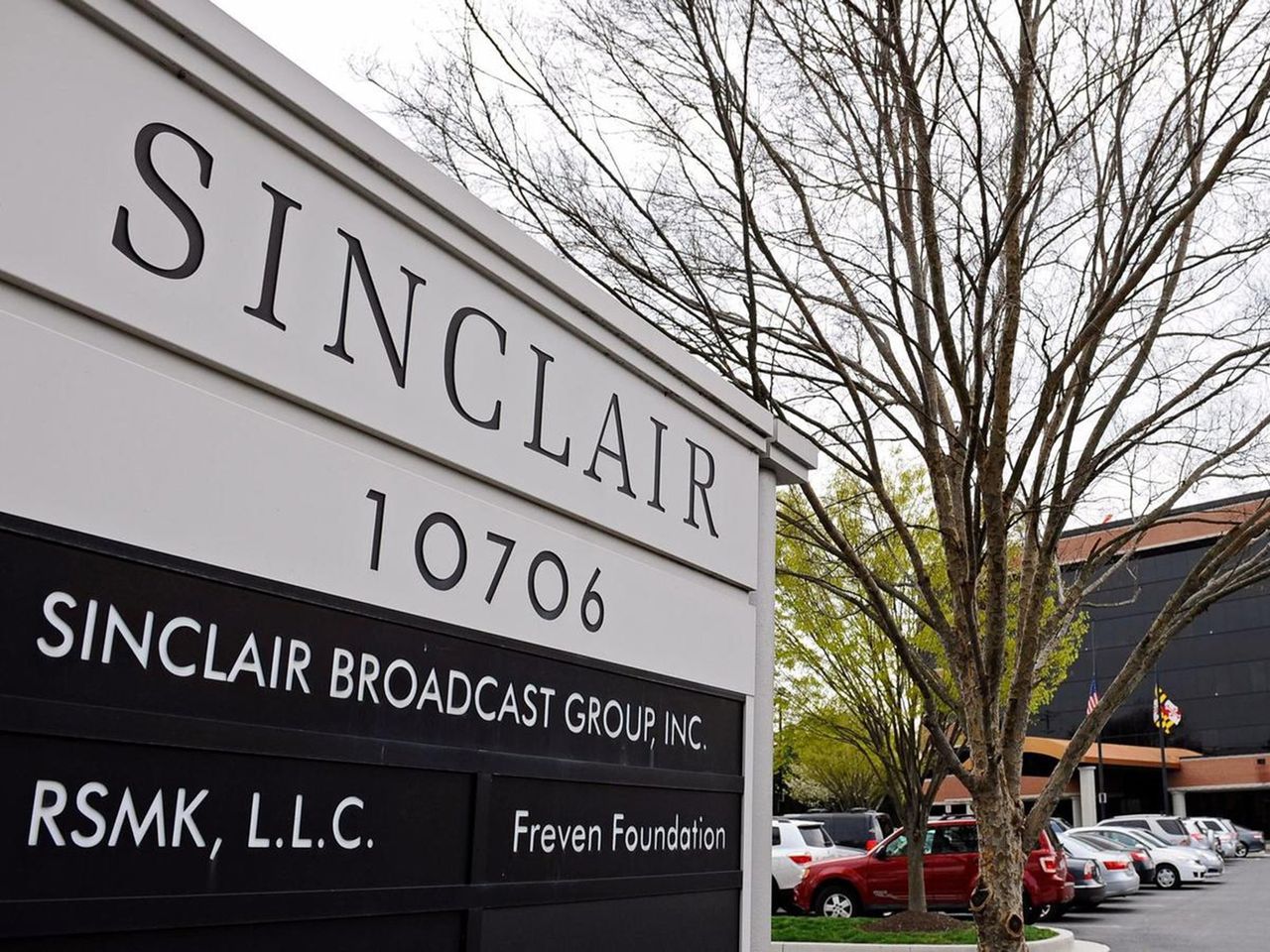Fox Sports Readies For ‘The Clash’ From L.A. Coliseum
The exhibition race this weekend is a first for NASCAR and the broadcaster

LOS ANGELES—Here’s something you don’t see every day: NASCAR drivers locked in competitive races on a newly built 0.25-mile-long oval asphalt track on the floor of the Los Angeles Memorial Coliseum.
But that’s exactly what NASCAR has planned for The Busch Light Clash At The Coliseum on Sunday, Feb. 6, and Fox Sports will be there to chronicle the spectacle—a first for NASCAR and television production, too. (NASCAR RaceDay on Fox starts at 2 p.m. EST with coverage through qualifying rounds, musical performances and the Clash, which begins at 6 p.m. EST.)
“Coverage is all about doing this event justice,” says Michael Davies, senior vice president of technical and field operations at Fox Sport. “We’re the lucky stewards of this crazy experiment, and you know, this is right in our wheelhouse. We like to experiment on TV, and apparently NASCAR likes to experiment with their sport.”
The Race
That experiment centers on a track just under half the length of the Martinsville Speedway in Ridgeway, Va., NASCAR’s shortest track prior to Sunday’s race, and the 23 drivers who will compete in the Clash following a series of qualifiers. The Clash, a preseason exhibition race, is a 37.5-mile-long race or a total of 150 laps. (The official NASCAR season starts with the Daytona 500 on Feb. 20—also on Fox).
Besides the track, ample track walls, track catching fencing and safer barriers have been installed in the Coliseum in preparation for racing.
Qualifiers begin on Feb. 5 when 40 racers compete against the clock to determine their starting positions in four 25-lap Heat Races of 10 drivers each the next day during the telecast. The top four drivers from each heat automatically qualify for The Clash, but before the main event the 24 remaining drivers will compete again in two 50-lap Last Chance Races, each with 12 drivers. The top three from each of these races will advance as well. The 23rd and final spot will be filled by the driver with the highest point finish last season who did not qualify for The Clash.
Besides being the first NASCAR race in the Los Angeles Coliseum, The Clash will also be the first race for NASCAR’s Next Gen car—originally scheduled to debut last season but postponed due to the pandemic. Its official debut will be at the Daytona 500.
Get the TV Tech Newsletter
The professional video industry's #1 source for news, trends and product and tech information. Sign up below.
The Production
Fox Sports has regularly produced sports coverage like University of Southern California (USC) and NFL football from the Coliseum over the years, but those productions haven’t offered a lot of guidance for planning coverage of this weekend’s race. Rather, the production team has simulated what it expects coverage to look like with the help of online video game iRacing, says Davies.
“But in terms of what’s actually going to happen and how Artie Kempner, our director, is going to cover it, it’s going to be a learning experience,” he says.

Unlike other NASCAR race coverage, production of The Clash offers a couple of unique opportunities for how cameras are used. One of the most obvious will be views of the entire track and all of the cars in the same shot. “You’ll be able to see end zone to end zone,” says Davies.
The other will the use of SkyCam to cover the race, which is pretty much table stakes for NFL games, but given the unique setting of The Clash may be a first for NASCAR. Suspended on a cable system, SkyCam has the freedom to move over the entire track, capturing never-before-seen angles of NASCAR racing, says Davies..
“I think the SkyCam will probably end up being one of the most used coverage cameras even though we have all the other cameras,” he says.
Fox Sports will deploy a large complement of cameras, ranging from a half dozen robotic cameras and a jib-mounted camera in the peristyle area of the Coliseum to in-car RF cameras and POVs tucked inside the walls in the safer barriers.
But because of the size of the track, the locations of many of these and the other cameras to be used needed a rethink. “From a camera position standpoint, you have to reinvent coverage for a smaller track. Overall, you're just basically shrinking what you do,” says Davies.
Initially, Fox Sports planned to use camera positions in place for football coverage, but as the track was built on the Coliseum floor it became apparent these cameras needed to be higher. “Once we went up there, it kind of started to look like a NASCAR event,” he says.
Drone-mounted cameras will provide aerial shots outside of the Coliseum of the haulers, drivers and garage, and Super Slow-Motion cameras and EVS XtraMotion will be deployed for coverage of the race, he says.
Audio production is a concern given the decibel level of a NASCAR race and the relatively tiny bowl-like venue. While camera operators and other members of the production team will wear noise-cancelling headsets to hear direction over the roar, Fox Sports abandoned the Coliseum’s open broadcast booth for its announcer team of Mike Joy, Tony Stewart and Clint Bowyer. “We actually moved the announcers over to an ancillary booth where we knew that the windows wound never be open,” says Davies.
Graphics and EVS servers will be controlled remotely from Pittsburgh because that’s where many of Fox Sports’ “core operators” reside, adds Davies.
Preparing to cover The Clash brings back memories of another recent production for Davies. “It reminds me of when we did Field of Dreams [the MLB game between the Chicago White Sox and New York Yankees in Dyersville, Iowa] last year. When you do anything for the first time, especially take a sport and just transplant it into someplace it's never been, you know, allows for a certain degree of uncertainty. That’s exciting.”
Phil Kurz is a contributing editor to TV Tech. He has written about TV and video technology for more than 30 years and served as editor of three leading industry magazines. He earned a Bachelor of Journalism and a Master’s Degree in Journalism from the University of Missouri-Columbia School of Journalism.

